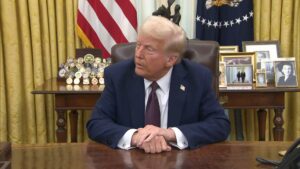Australian Muslim artist pulled from Venice Biennale over political work
Khaled Sabsabi’s past video featuring Hezbollah leader leads to withdrawal
SYDNEY, Australia (MNTV) — Australian Muslim artist Khaled Sabsabi, selected to represent Australia at the 2026 Venice Biennale, has been removed from the prestigious event.
This followed a political backlash over his past work, including a video featuring Hezbollah leader Hassan Nasrallah.
Creative Australia, the federal arts body overseeing the selection, withdrew its support, citing concerns that Sabsabi’s art could provoke “prolonged and divisive debate” and undermine public confidence in Australian art.
The decision has sparked a heated discussion about artistic freedom and the role of Muslim artists in addressing complex global issues.
The controversy stems from Sabsabi’s 2017 video installation, “You,” which included images of Nasrallah, the late leader of Hezbollah—a group designated as a terrorist organization by Australia and several other countries.
Critics, including Senator Claire Chandler, accused the government of allowing an artist who “highlights a terrorist leader” to represent Australia internationally.
In a statement to Australian Muslim Times, Sabsabi expressed deep disappointment, saying he was “extremely hurt” by the decision.
“Art should not be censored as artists reflect the times they live in,” he said.
Sabsabi, a Sydney-based artist of Lebanese descent, is renowned for his exploration of themes such as migration, identity, and the refugee experience.
Fleeing Lebanon’s civil war in 1978, he found refuge in Australia, where his art has become a powerful voice for the Muslim and immigrant communities.
His work spans painting, video installations, and sound art, often drawing on his personal journey and the cultural struggles of the Middle East.
The withdrawal has reignited debates about the intersection of art, politics, and religion, with many questioning whether Sabsabi’s Muslim identity and focus on Middle Eastern themes played a role in the decision.
As the controversy unfolds, it highlights the challenges faced by artists addressing contentious issues in an increasingly polarized world.










